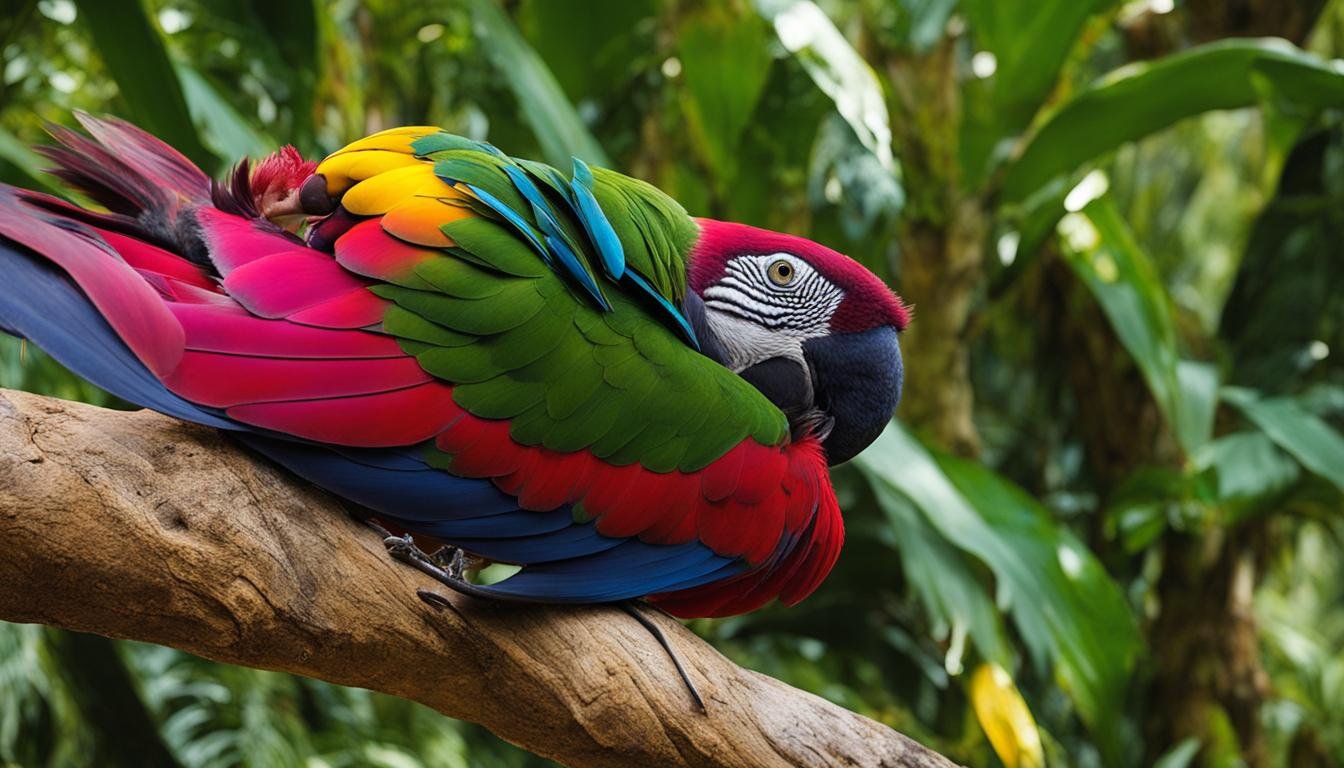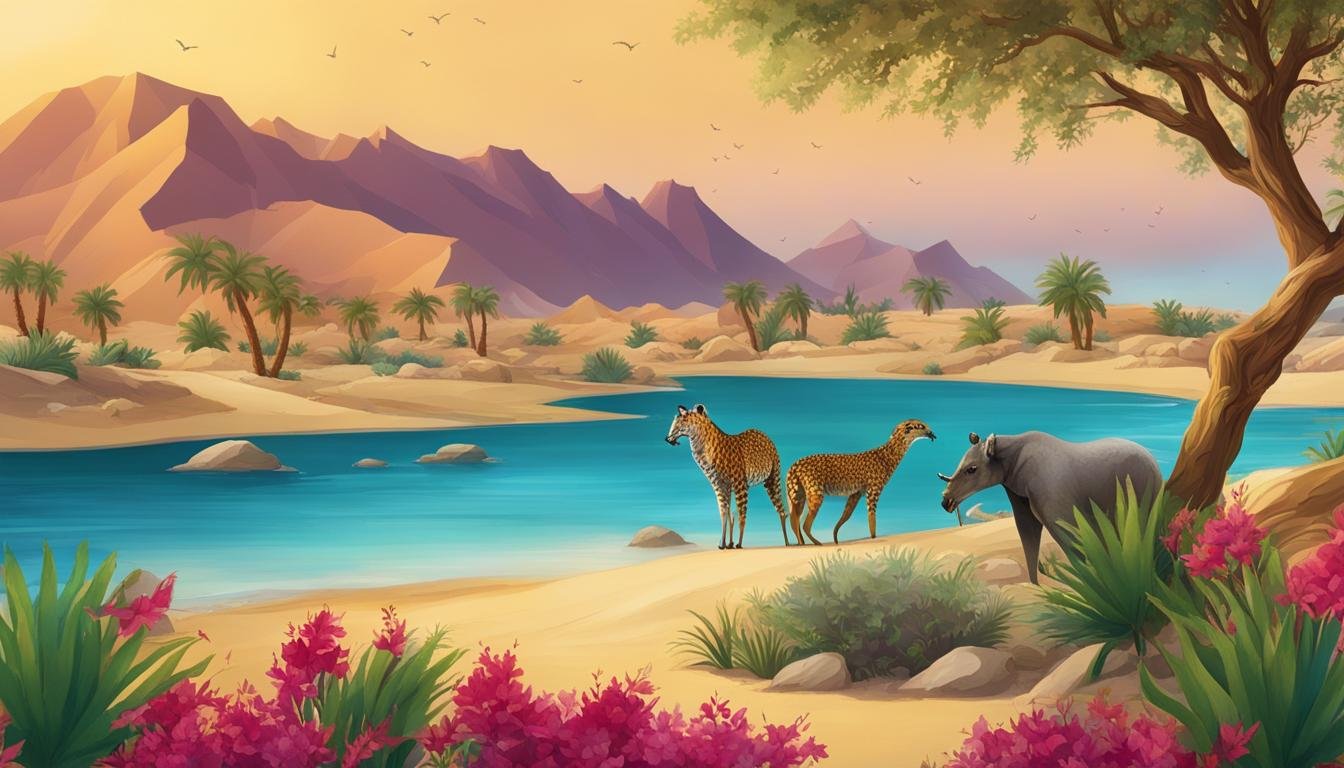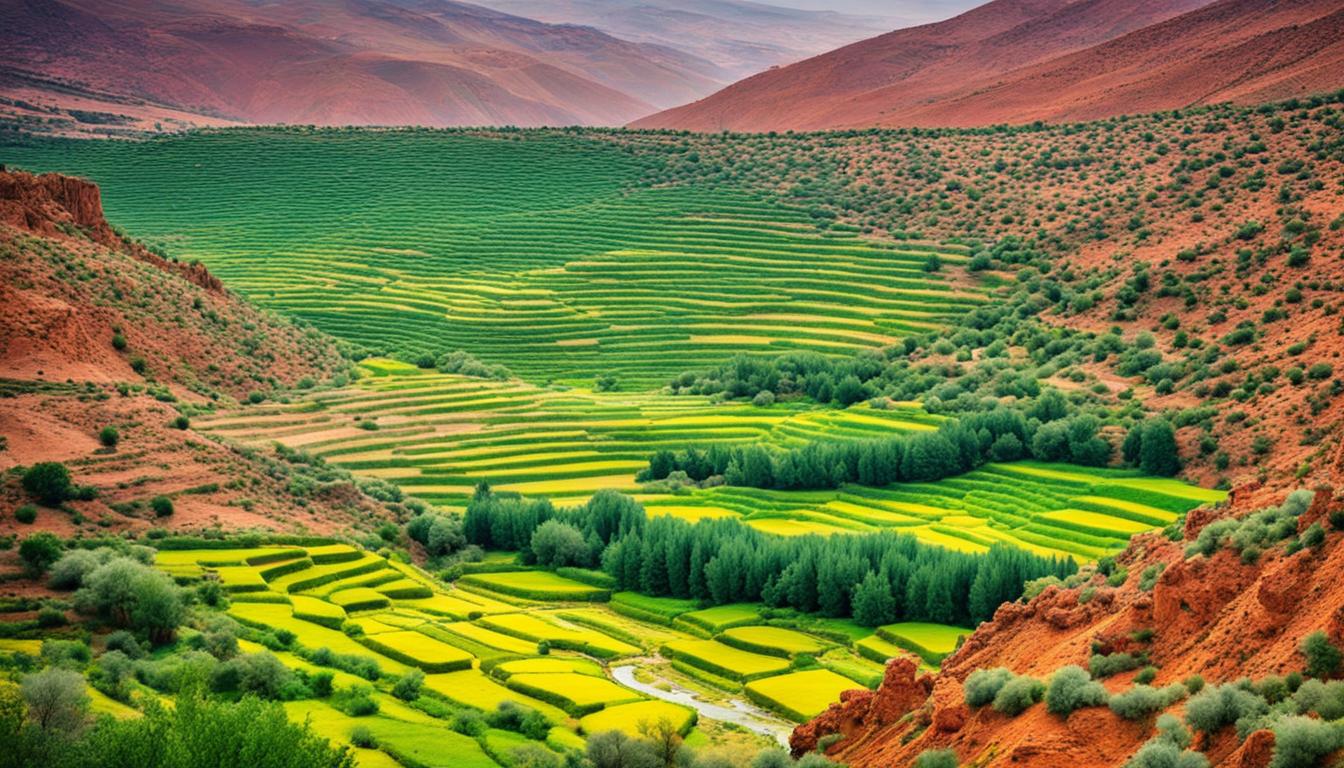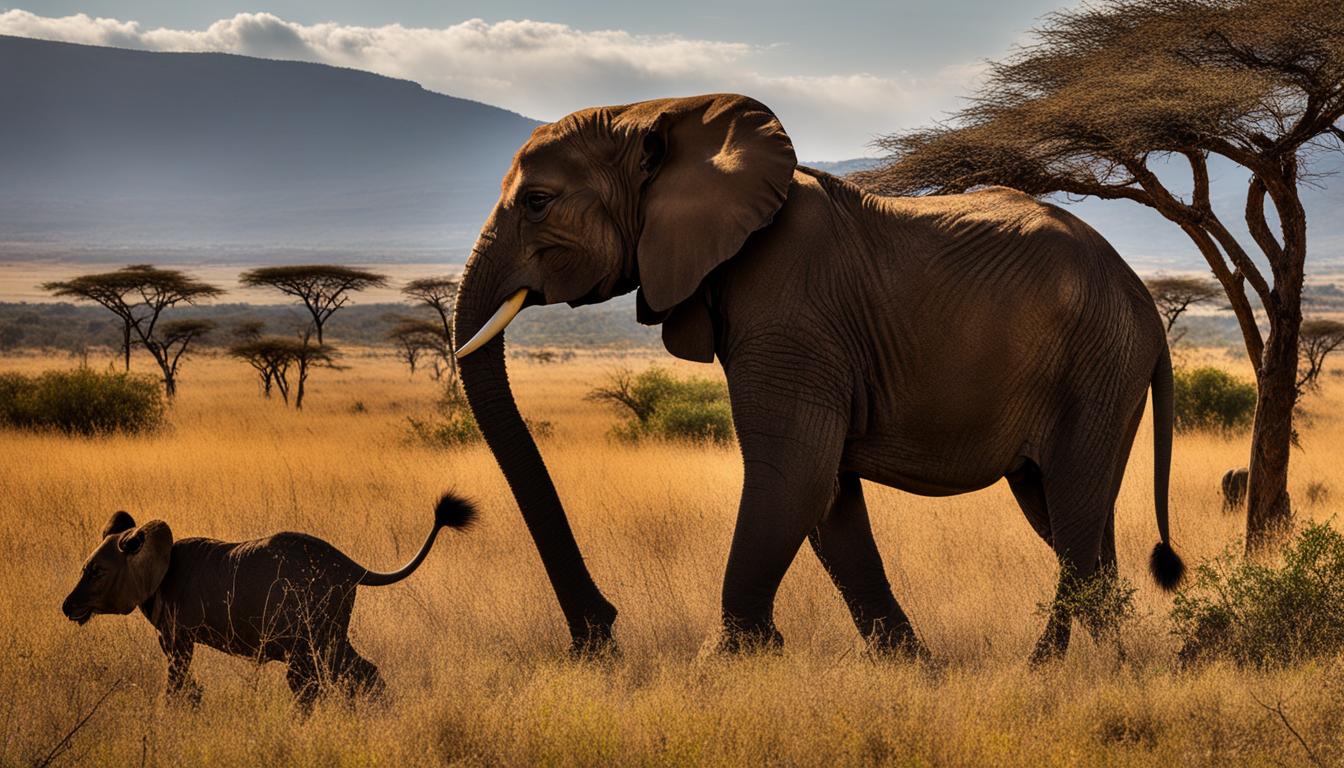Philippines Biodiversity: Animal and Plant Species and What Is Under Threat
The Philippines is a country renowned for its incredible biodiversity. It is one of 18 mega-biodiverse countries in the world, boasting two-thirds of the earth’s biodiversity. With between 70% and 80% of the world’s plant and animal species, the Philippines ranks fifth in the number of plant species and is home to 5% of the world’s flora.
From lush rainforests to diverse marine ecosystems, the Philippines is a haven for wildlife. However, this rich biodiversity is under threat from human activities. Endangered species in the Philippines face numerous challenges, including habitat loss, poaching, and climate change.
In this article, we will explore the unique animal and plant species found in the Philippines, the threats they face, and the conservation efforts being made to protect this precious biodiversity.
Key Takeaways:
- The Philippines is one of the most biodiverse countries, with two-thirds of the earth’s biodiversity.
- It ranks fifth in the number of plant species and is home to 5% of the world’s flora.
- Endangered species in the Philippines face threats such as habitat loss and climate change.
- Conservation efforts are being made to protect the unique biodiversity of the Philippines.
- The preservation of biodiversity is crucial for ecosystem health and the provision of essential services.
The Philippines’ Unique Plant Species
The Philippines is renowned for its incredible plant biodiversity, boasting a rich collection of unique and endemic species. With approximately 9,250 vascular plant species, one-third of them can only be found in the Philippines, making it a true botanical paradise.
Among the notable endemic plants in the Philippines are gingers, begonias, gesneriads, orchids, pandans, palms, and dipterocarps. These species have evolved and adapted to the distinct ecosystems found in the country, resulting in a diverse and vibrant plant life.
One particularly striking example is the presence of Philippine palms, with more than 150 species thriving exclusively in the Philippines. These palms add to the unique botanical tapestry of the country, showcasing its exceptional plant biodiversity.
Similarly, the Philippines is a haven for orchid enthusiasts, as it is home to a wide variety of orchid species. These beautiful and delicate flowers can be found in different regions across the country, adding a touch of elegance and charm to its landscapes.
Another remarkable group of plants found in the Philippines is the dipterocarps. These majestic trees were once prevalent in the broad lowland and hill rainforests of the country, playing a crucial role in the ecosystem. Unfortunately, due to deforestation and other human activities, many dipterocarp species are now endangered.
Key Philippine Plant Species
| Plant Group | Notable Species | Endemic Status |
|---|---|---|
| Gingers | Alpinia galanga, Curcuma longa | Endemic |
| Begonias | Begonia luzonica, Begonia elatior | Endemic |
| Gesneriads | Paraboea amplifolia, Begonia bullata | Endemic |
| Orchids | Phalaenopsis violacea, Dendrobium aphyllum | Endemic |
| Pandans | Pandanus tectorius, Pandanus odorifer | Endemic |
| Palms | Buri palm (Corypha elata), Philippine fan palm (Livistona rotundifolia) | Endemic |
| Dipterocarps | Apitong (Dipterocarpus grandiflorus), Lauan (Shorea spp.) | Endemic and Endangered |
The Bird Species of the Philippines
The Philippines is home to over 530 bird species, with about 35% of them being endemic. The country boasts seven Endemic Bird Areas, each supporting a unique selection of avian species. One of the most well-known birds in the Philippines is the critically endangered Philippine eagle, a majestic and powerful bird that ranks among the world’s largest. These eagles are emblematic of the country’s rich avifauna and are deeply revered for their significance. Additionally, the Philippines has a single endemic bird family, the Rhabdornithidae, represented by the Philippine creepers. These fascinating birds are an integral part of the country’s avian diversity.
Conservation efforts are currently underway to protect and safeguard the endangered bird species and their habitats in the Philippines. These initiatives aim to preserve the delicate balance of the ecosystem and prevent further decline in bird populations. Through habitat preservation, education, and raising awareness about the importance of biodiversity, stakeholders are striving to secure a sustainable future for these endemic bird species. By ensuring the protection of these magnificent creatures, the Philippines can continue to be a haven for avian biodiversity and preserve its natural heritage for generations to come.

Mammals in Danger
The Philippines is home to over 165 unique mammal species, with more than 60% of them being endemic to the country. Among these species, several are facing critical threats and are in danger of extinction.
One notable endangered mammal in the Philippines is the tamaraw, a dwarf water buffalo found exclusively on Mindoro Island. With its population estimated to be less than 500 individuals, the tamaraw is considered critically endangered. Efforts are underway to protect its habitat and establish conservation programs to ensure its survival.
Another critically endangered species is the Philippine freshwater crocodile. Found in the freshwater marshes, rivers, and lakes of the Philippines, this reptile is believed to have a population of fewer than 250 mature individuals. Conservation initiatives are focused on preserving its habitat and implementing measures to prevent further decline.
The Visayan warty pig is another critically endangered mammal found in the Philippines. It is now confined to Panay and Negros Islands, with a population estimated to be less than 300 individuals. Protecting its remaining habitat and implementing conservation strategies are crucial for the species’ survival.

Conservation efforts in the Philippines aim to safeguard these unique mammals and their habitats. By addressing the underlying causes of endangerment and implementing measures to protect their ecosystems, we can ensure the long-term survival of these remarkable species.
Unique Reptiles and Amphibians
The Philippines boasts an incredible diversity of reptile and amphibian species, with approximately 235 reptile species and almost 85% of amphibian species being endemic to the country. These unique creatures play a crucial role in the Philippines’ rich biodiversity.
Among the reptiles, nearly 70% of them are endemic, meaning they can only be found in the Philippines. The country is home to six endemic reptile genera, including the snake genus Myersophis. These endemic reptiles have evolved to thrive in the unique environments of the Philippines, making them an important part of the country’s natural heritage.
One of the most critically endangered reptile species in the Philippines is the Philippine crocodile, also known as the Mindoro crocodile. This crocodilian is considered the most threatened in the world, with only a few individuals remaining in the wild. Conservation efforts are focused on protecting and restoring their habitats to ensure their survival.
The Philippines also harbors a diverse range of amphibian species, with almost 85% of them being endemic. These unique amphibians have adapted to various ecosystems, including forests, wetlands, and freshwater habitats. Their presence is an indicator of the country’s overall ecological health.
Conservation efforts in the Philippines aim to protect these unique reptiles and amphibians from threats such as habitat loss and illegal hunting. Preserving their habitats and raising awareness about their importance are key to ensuring their continued existence in the country.
| Reptile Species | Status |
|---|---|
| Philippine Crocodile (Crocodylus mindorensis) | Critically Endangered |
| Philippine Forest Turtle (Siebenrockiella leytensis) | Endangered |
| Philippine Sailfin Lizard (Hydrosaurus pustulatus) | Near Threatened |
| Philippine Cobra (Naja philippinensis) | Least Concern |
Diverse Marine Biodiversity
The Philippines is blessed with an abundance of marine biodiversity, thanks to its location within the Coral Triangle. This region is renowned for its exceptional coral biodiversity and is considered one of the world’s richest marine environments. With its higher concentration of species per unit area than anywhere in Indonesia and Wallacea, the Philippines is a true haven for marine life.
However, this delicate marine ecosystem is facing numerous threats that put its biodiversity at risk. The Philippines is witnessing a decline in reef cover, seagrass cover, and fishery production, all of which have a profound impact on the marine ecosystem. Without urgent action, we risk losing the diverse array of species that call these waters home.
One such endangered marine species is the Philippine eagle ray. This magnificent creature, with its majestic wingspan, is a rare sight. Its presence in Philippine waters is an indication of the richness and importance of this marine environment.

Conservation efforts are focused on protecting the coral reefs, mangroves, and other critical marine habitats that provide a safe haven for these endangered species. By preserving these habitats, we ensure the survival of not only the marine life but also the delicate balance of our entire ecosystem. Through education, awareness, and sustainable practices, we can safeguard the future of our marine biodiversity and ensure that generations to come can continue to marvel at the wonders of the underwater world.
Threats to Biodiversity in the Philippines
Biodiversity in the Philippines is facing numerous threats that endanger the survival of many plant and animal species. These threats arise from various human activities, including the exotic pet trade, illegal hunting and overfishing, deforestation and agricultural land clearing, climate change, and pollution.
The exotic pet trade poses a significant threat to biodiversity as it drives the illegal capture and trade of endangered species. Many unique and vulnerable animals, such as reptiles and birds, are targeted for their exotic appeal in the pet market.
Illegal hunting and overfishing also contribute to the endangerment of species in the Philippines. Unsustainable hunting practices and the depletion of fish populations disrupt the delicate balance of ecosystems, leading to the decline of numerous species.
Deforestation and agricultural land clearing have a severe impact on biodiversity in the Philippines. Forests, which are home to countless species, are cleared to make way for agriculture and urban development. This loss of habitat disrupts ecosystems and threatens the survival of many plant and animal species.
The impacts of climate change, such as rising temperatures, changing rainfall patterns, and extreme weather events, further exacerbate the threats to biodiversity in the Philippines. These changes disrupt ecosystems and impact the reproductive and survival rates of various species.
Pollution, including air, water, and soil pollution, poses a significant threat to biodiversity. Toxic substances and pollutants released into the environment harm the health and survival of wildlife, leading to population decline and species endangerment.
Addressing these threats is crucial to protect the unique biodiversity of the Philippines. Measures need to be taken at both individual and collective levels to combat the exotic pet trade, enforce strict regulations on hunting and fishing practices, promote sustainable land use and reforestation efforts, mitigate the impacts of climate change, and implement effective pollution control measures.

| Threats | Impact on Biodiversity |
|---|---|
| Exotic pet trade | Illegal capture and trade of endangered species |
| Illegal hunting and overfishing | Disruption of ecosystems and decline of species populations |
| Deforestation and agricultural land clearing | Loss of habitat and biodiversity |
| Climate change | Disruption of ecosystems and negative impacts on species |
| Pollution | Harmful effects on wildlife health and survival |
Protecting the unique biodiversity of the Philippines requires collective efforts, awareness, and sustainable practices. By addressing the main threats and implementing conservation measures, the country can safeguard its natural heritage and ensure the continued existence of its rich and diverse plant and animal species.
Conservation Efforts in the Philippines
The Philippines has taken significant steps to enhance biodiversity conservation and protect its unique natural heritage. One of the key initiatives is the implementation of the National Biodiversity Strategy and Action Plan (NBSAP). The NBSAP serves as a comprehensive roadmap that identifies conservation priority areas and species conservation priorities in the country.
The Philippines is also committed to achieving the Aichi Biodiversity Targets set by the Convention on Biological Diversity. These targets aim to address the underlying causes of biodiversity loss and enhance the implementation of conservation measures. Efforts have been made to increase forest cover, expand protected areas, and implement species conservation programs in line with these targets.
To ensure the successful implementation of conservation measures, the Philippines has established various support mechanisms. These mechanisms include legislation to protect and preserve biodiversity, funding initiatives to support conservation projects and research, capacity-building programs to enhance knowledge and skills, coordination among government agencies and stakeholders, and the mainstreaming of biodiversity conservation into national policies and programs.

By combining these conservation measures with the active involvement of local communities, the Philippines is working towards the preservation and sustainable management of its rich biodiversity. These efforts are essential to safeguard the country’s unique ecosystems and ensure the long-term survival of its plant and animal species.
Endangered Species in the Philippines
The Philippines is home to numerous endangered animals, including the iconic Philippine eagle, tamaraw, and Philippine crocodile. These species are among the most critically endangered and require urgent conservation efforts to ensure their survival.
The Philippine eagle (Pithecophaga jefferyi) is one of the largest and most powerful eagles in the world. It is also known as the “Monkey-eating eagle” due to its diet of monkeys. The Philippine eagle is native to the forests of the Philippines and is currently facing threats such as habitat loss and illegal hunting.
The tamaraw (Bubalus mindorensis) is a critically endangered dwarf water buffalo found only on Mindoro Island. It is one of the most threatened mammals in the world, with a population estimated to be less than 300 individuals. Habitat loss, poaching, and disease pose significant risks to the survival of the tamaraw.
The Philippine crocodile (Crocodylus mindorensis), also known as the “Mindoro crocodile,” is considered the most threatened crocodilian in the world. It is endemic to the Philippines and is primarily found on the island of Mindoro. Habitat destruction, hunting, and accidental capture in fishing gear are major factors contributing to its critically endangered status.

Efforts are being made to protect the habitats of these endangered animals, prevent illegal hunting and trafficking, and raise awareness about the importance of biodiversity conservation. Conservation organizations, government agencies, and local communities are working together to implement measures that will support the recovery and long-term survival of these species.
The Importance of Protecting Philippines Biodiversity
Protecting the biodiversity of the Philippines is of paramount importance when considering the ecological significance and ecosystem services it provides. As one of the world’s recognized biodiversity hotspots, the Philippines is home to a remarkable range of species, contributing to its high species richness. Conserving this biodiversity is crucial not only for the preservation of unique and endangered species but also for the maintenance of essential ecosystem services.
The Philippines’ rich biodiversity plays a vital role in maintaining ecological balance and ensuring the provision of various ecosystem services. These services include the purification of air and water, nutrient cycling, pollination, and natural pest control. By conserving biodiversity, we contribute to the preservation of these essential services, which have wide-ranging benefits for both humans and the environment.
For example, the lush rainforests in the Philippines act as natural carbon sinks, helping to mitigate climate change by absorbing and storing large amounts of carbon dioxide, a greenhouse gas. Additionally, the intricate web of species interactions in these ecosystems promotes a healthy and resilient environment, ensuring the sustainability of vital resources such as clean water and fertile soil.
Conservation efforts in the Philippines not only safeguard endangered species, but also protect the delicate balance of these ecosystems and the valuable services they provide. By preserving biodiversity hotspots such as the Philippines, we ensure the continuation of these essential services, safeguarding the well-being and future of both human and natural communities.
It is paramount that we continue to support and promote initiatives that protect and conserve the ecological importance of the Philippines. By doing so, we can secure a sustainable future for both the unique species and the numerous benefits they provide to our planet and its inhabitants.

The Future of Biodiversity in the Philippines
The future of biodiversity in the Philippines is intricately tied to sustainable development practices and the active involvement of local communities. To ensure the preservation of the country’s unique flora and fauna, concerted efforts need to be made to promote sustainable agriculture, responsible tourism, and the protection of natural habitats.
Sustainable agriculture: By adopting environmentally friendly farming practices, such as organic farming and agroforestry, the Philippines can minimize the negative impacts of agriculture on biodiversity. This includes reducing the use of chemical fertilizers and pesticides that can harm local ecosystems and implementing strategies that promote soil conservation and water management.
Responsible tourism: The tourism industry plays a significant role in the Philippines’ economy, but it can also be a driver of habitat destruction and wildlife disturbance. By promoting responsible tourism practices, such as low-impact accommodations, wildlife-friendly tours, and visitor education programs, the country can ensure that tourism supports biodiversity conservation and contributes to local communities’ well-being.
Protection of natural habitats: The Philippines is blessed with diverse ecosystems, including rainforests, coral reefs, and mangrove forests. These habitats provide crucial habitats for countless plant and animal species. To safeguard these habitats, it is essential to establish and expand protected areas, strengthen enforcement of environmental laws, and engage local communities in the management of these areas.
Furthermore, education and awareness programs can play a crucial role in fostering a sense of stewardship among individuals. By educating people about the value and importance of biodiversity and the consequences of its loss, we can encourage community involvement and empower individuals to take action to protect the country’s unique natural heritage.
In summary, the future of biodiversity in the Philippines depends on implementing sustainable development practices, promoting community involvement, and raising awareness about the importance of biodiversity conservation. By doing so, we can ensure the preservation of this precious natural heritage for future generations to enjoy and benefit from.
Conclusion
The Philippines is home to a remarkable array of biodiversity, boasting a wealth of unique and endangered species. It is vital to prioritize conservation efforts to safeguard the country’s natural heritage and ensure the long-term survival of its remarkable plant and animal life. By effectively addressing the main threats, implementing comprehensive conservation measures, and promoting sustainable practices, the Philippines can successfully preserve its biodiversity for future generations.
Conservation in the Philippines plays a crucial role in protecting endangered species and preserving the delicate balance of ecosystems. The efforts invested in tackling the main factors contributing to species endangerment, such as habitat loss, illegal hunting, and climate change, are of utmost importance. By taking decisive action to curb deforestation, protect critical habitats, and enforce stringent regulations, the conservation initiatives can effectively safeguard the country’s unique natural treasures.
Preserving biodiversity in the Philippines is not only essential for the well-being of ecosystems but also for the provision of vital ecosystem services. The country is a recognized biodiversity hotspot, characterized by its high species richness. Protecting the natural environment helps maintain the purity of air and water, facilitates nutrient cycling, fosters pollination, and ensures natural pest control. The conservation efforts contribute to the overall sustainability and resilience of the country’s ecosystems, benefiting both nature and humans.
With concerted efforts, the Philippines can successfully preserve its remarkable biodiversity. By engaging local communities, promoting sustainable development practices, and fostering a sense of stewardship, individuals can actively contribute to protecting and conserving the country’s natural treasures. By working together towards a common goal of biodiversity preservation, the Philippines can secure a vibrant and sustainable future for its unique plant and animal species.
FAQ
What is the biodiversity of the Philippines?
The Philippines is one of 18 mega-biodiverse countries in the world, with two-thirds of the earth’s biodiversity and between 70% and 80% of the world’s plant and animal species.
What are some unique plant species found in the Philippines?
The Philippines is home to a wide range of unique plant species, including gingers, begonias, gesneriads, orchids, pandans, palms, and dipterocarps.
How many bird species are there in the Philippines?
The Philippines is home to over 530 bird species, with about 35% of them being endemic.
What are some endangered mammal species in the Philippines?
Some endangered mammal species in the Philippines include the tamaraw, Philippine freshwater crocodile, and Visayan warty pig.
How many reptile species are there in the Philippines?
The Philippines is home to about 235 reptile species, with nearly 70% of them being endemic.
What is the marine biodiversity like in the Philippines?
The Philippines is located within the Coral Triangle and has a higher concentration of species per unit area than anywhere else in Indonesia and Wallacea.
What are some threats to biodiversity in the Philippines?
Threats to biodiversity in the Philippines include the exotic pet trade, illegal hunting and overfishing, deforestation and agricultural land clearing, climate change, and pollution.
What conservation efforts are being made in the Philippines?
The Philippines has implemented various measures, including the National Biodiversity Strategy and Action Plan (NBSAP), to enhance biodiversity conservation.
What are some endangered species in the Philippines?
Some endangered species in the Philippines include the Philippine eagle, tamaraw, and Philippine crocodile.
Why is it important to protect the biodiversity of the Philippines?
Protecting the biodiversity of the Philippines is crucial for the conservation of unique and endangered species, as well as for the preservation of ecosystem services.
What does the future of biodiversity in the Philippines depend on?
The future of biodiversity in the Philippines depends on sustainable development practices and the active involvement of local communities.
What is the conclusion regarding conservation and endangered species in the Philippines?
The Philippines is a biodiversity-rich country that requires conservation efforts to protect its unique plant and animal species.








